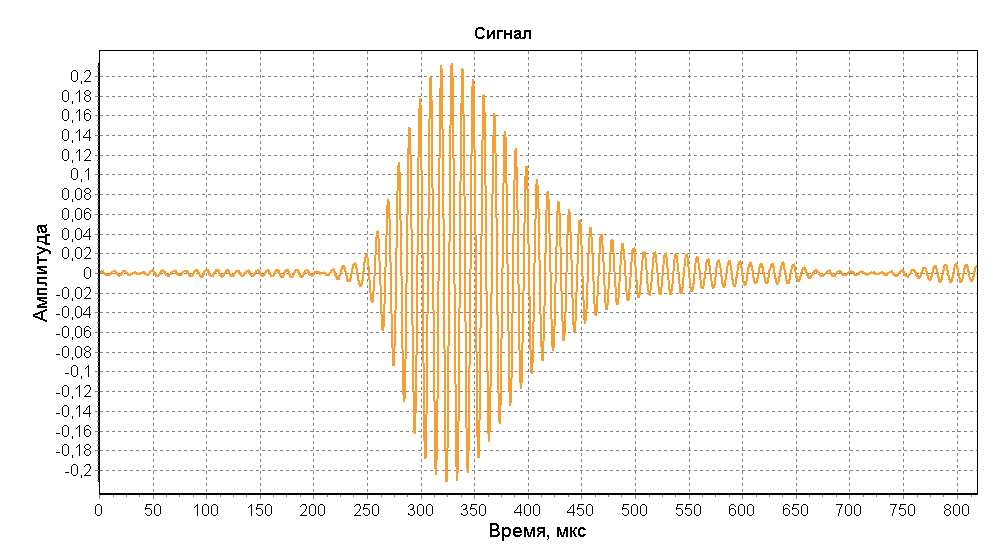Detection of a signal in the noise

In my activity I have to control different parameters of the ground pulse-phase radionavigation systems (IPNS) Chayka and Loran-C. In this article I want to share one of methods of detecting the time of arrival of the pulse, IPNS in the presence of noise. The method is applicable in many problems of signal search forms.
Systems belong to the class of hyperbolic systems and is based on measuring the time difference of arrival of radio pulses received from chain of transmitting stations. In each chain one of the stations is leading and the others slaves. All of them exactly synchronized.
/ > The main problem in detection of signals, IFRS is a shape distortion of the received pulses by applying to a surface reflected wave components. Signal components that are not propagated along the surface, are a variety of ways in different times. It is impossible to reliably predict the time of their arrival. However, it is clear that the reflected signal components propagate slower than the surface component. They also affect the form of the received signal. Form of the received pulse may vary depending on the time of year, time of day, and weather conditions and geographical area. To perform the tasks of navigation needed an algorithm to detect the beginning of the superficial component of the pulse.
The signal xt (t) in the time domain can be represented by the following equation:
 (1)
(1)where xg (t) – surface component, the amplitude and delay of n-th reflected component is determined by the factors kn and tn and e (t) — stun component.
Below shows a reference pulse, IFRS and its spectrum after passing the band pass filter of the receiver. The sampling frequency is 5 MHz.


As an example, consider the simulated pulse, consisting of a surface and the reflected components. The figures below are presented graphs on which the model shown is a pulse consisting of two components displaced from each other by 130 µs. The amplitude of the reflected component is 2 times lower than the amplitude of the surface component.


An equivalent representation of the signal in the frequency domain is described as:
 (2)
(2)where Xt (f), Xg (F) and E (f) signal spectra xt (t), xg (t) and e (t).
We assume that the normalized spectrum of the reference signal system "Loran-C" or "Seagull" is referred to as X0 (f).
Obviously,
 (3)
(3)where kg — the amplitude of the surface component. If the expression for Xg (f) from the formula (3) to substitute in the formula (2) and divide all terms pocino on X0 (f), you get an expression
 (4)
(4)The figure below shows the graph of the result of dividing the signal spectrum a spectrum of the Etalon. Depicted in red, the graph is a horizontal saw-tooth line in the entire frequency range.

The inverse Fourier transform on expression (4) gives the formula
 (5)
(5)The mathematical meaning of the expression (5) is that in the time domain we get the peaks as Delta functions at the moments of occurrence of both surface and all of the reflected components of the signal, normalized by amplitude.

Usual method of dividing the spectra works well for perfect signals. When you add a signal noise component of the effectiveness of the method deteriorates. The figures below shows the graph of detection start signal when the ratio signal/noise 25 dB. As can be seen from the drawings determination of the start signals cannot be performed.


On the spectrum chart you notice that the inside band width of approximately 30 kHz with a center at 100 kHz the result of dividing the spectra has a horizontal saw-tooth form as in use of a method of dividing the spectra into perfect zashumlennym signal. The use of rectangular window with a width of 30 kHz centered at 100 kHz to eliminate the noise before the operation inverse Fourier transform. The figure below shows the graph of detection start signal when using the window filtering of noise-free signal. Two maximum graphics allow to detect the beginning of each of the components of the signal in the background noise and also to estimate the ratio of their amplitudes.

The method of dividing the spectra with the use of window smoothing is effective when the ratio of the signal-to-noise ratio above 12 dB. The most effective type of window is recognized as a rectangular window with a bandwidth of 30 kHz. The figures below shows the actual pulse chain of the Northern Sea of China Chain graph and the detection of its beginning.


The original article is located SDAs. The algorithm currently used by me to control the parameters of stations, IFRS the far East region.
Комментарии
Отправить комментарий